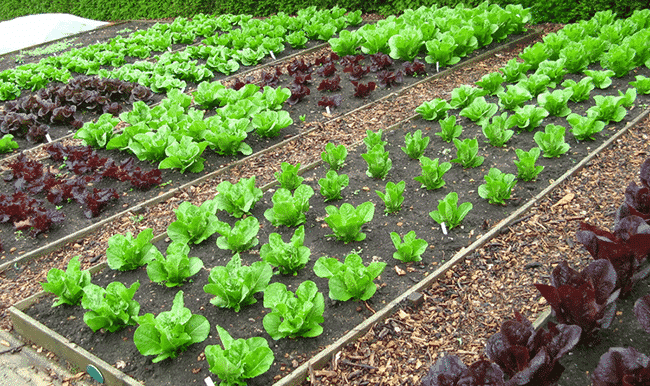Organic vegetable gardening
I was asked recently how to grow seedlings. There are whole books written on the subject, and Dr. Jacob MIttleider's Let's Grow Tomatoes, Gardening By The Foot, and several others are excellent sources for this info. They can be found at www.growfood.com in the Store. Following is a recap, with enough detail that if you pay attention you can do a good job.
If plastic pots are available and inexpensive enough, we will use them in trays, which in America are often 10" X 20" plastic themselves. But in most places around the world, we build our own trays and make them 18" X 18" X 3" deep. We fill them with sawdust (rice hulls, coconut husks, peat moss, perlite, pine needles) and sand. The sand should be between 25% and 35% by volume, and the other clean ingredients I've mentioned can be mixed in amounts you prefer.
Do not use dirt in the trays. And don't buy pre-prepared mixes with some fertilizer in them. They are VERY expensive for what you get. Instead, for seeds mix 1 1/2 ounces (3 tablespoons) of Mittleider Pre-Plant mix into the soil mix of each 18" X 18" X 3" flat. This can be made by mixing 80 parts lime (or gypsum if you receive less than 20" of annual rainfall), with 4 parts Epsom Salt, which is magnesium sulfate, and 1 part 20 Mule Team Borax (boron).
of Pre-Plant mix plus 3/4 ounce of Mittleider Weekly Feed mix into the soil mix of the flat. The Weekly Feed formula is available free at www.foodforeveryone.org/learn on the Fertilizer pages.
To plant seeds, use a 17"-long piece of 1" X 2" wood and make between 6 and 8 shallow furrows in the tray. Then sprinkle seeds in the furrows - 100-125 of small seeds, and fewer large seeds. Use a knife blade or dibble to cover the seeds with the sides of the furrow.
Before watering the newly planted seeds, cover the flat with burlap or cheesecloth. Water through this to avoid moving your sprouting seeds and killing them. Use only clean water to water seeds. Remove immediately upon the appearance of any sprouts.
When growing seedlings you should begin feeding your plants the minute they show their heads above the soil. And you need to give them maximum light just as fast - so they don't become leggy looking for light.
You should feed and water your seedlings at the same time. To do this, mix 1 ounce of Weekly Feed with 3 gallons of water (10 ounces with 30 gallons, 16 ounces with 55 gallons of water). Use this "Constant Feed" solution to water your seedlings, and do so at least once every day. Check the drainage and make sure you are getting proper drainage, otherwise, your plants may drown, or rot.
The first transplanting should be done by the time your plants have their second true leaves. The first transplanting should be done - again using 18"-square flats - into 2" or bigger pots, or into pre-marked spots evenly spaced in the flat. We make markers 7 X 7, 7 X 8, 8 X 8, 8 X 9, and 9 X 9, and use them depending on the size the transplant will become in the time we need it to stay in the flats.
And when the leaves begin to overlap, if your garden is ready and the weather is favorable to healthy plant growth, you should transplant into the garden. Otherwise, you need to transplant again - with double the space between plants. For tomatoes, peppers, and other slow-growing plants you may need to prune the leaves a couple of times before transplanting the second time.

Comments
Post a Comment